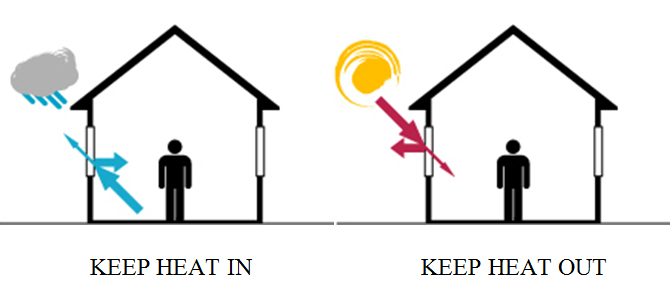Energy Efficient Glass or Low Emissivity Glass (Low-E)
This type of glass refers to group of products which have one side coated: a thin microscopic layer of metallic oxides has been placed on one side of the glass, intending to reduce the solar energy transmission. This gives the glass better insulating performance without differentiating it from the usual glass type -in terms of light reflection and transmission- making it suitable for residential use.
Low-e glazing improves significantly comfort levels, by bringing the glazing’s surface temperature close to the room temperature. In this way low-e glazing increases the comfort levels and reduces the phenomenon of Cold Zone around the glazing area noticed in winter time.
In single glazing, Low-e glass can be ideally applied in deep freezing conditions when thermally treated. In double glazing units the use of low-e can offer high prices of thermal insulation. Compared to single glazing, double glazing of ordinary glass panes can reduce thermal loss at about 40%, improving massively thermal insulation of buildings (residential or industrial).

Benefits in wintertime:
- Energy savings due to reduced heating requirement
- Reduced condensation on the inner pane
- Improved comfort due to reduced cold spots and drafts: no cold areas around windows
Benefits in summertime:
- Improved comfort due to reduced overheating
- Cost reduction where there is air conditioning
Benefits in all seasons:
- Environmentally friendly thanks to the CO2 emission reduction
